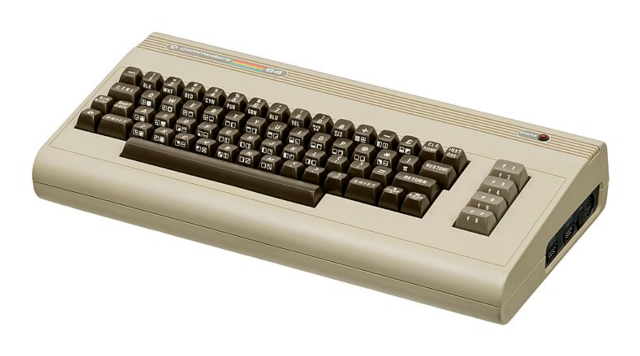The Commodore 64 has been mentioned a few times in my news sources of late. Though I’m not sure why (just a random cluster, no doubt) it triggered some fond, uh, memories.
At the end of the 1970’s, I was hired (through a chain of subcontractors) to work on the Space Shuttle. It seems that the launch control computer systems were standardized to use a terminal whose manufacturer (Omron, if I recall correctly) had discontinued it. Rather than rewrite the many mainframe software modules (apparently written by multiple vendors, some of whom were no longer involved in the project) that made use of the proprietary features of the terminal, it was decided that it would be simpler to just build a terminal that emulated the discontinued model. I was doing a lot of terminal emulation in those days, so it seemed a good fit.
The terminal emulation business was a profitable place to be, as most terminals of the time were discrete proprietary hardware designs that were expensive to produce in the rather modest quantities in which they could be sold, whereas new designs could be based on a microprocessor and software allowing mass production of the hardware coupled with some software changes to emulate the niche market products. There was, therefore, a lot of working room in the budget. I worked with Bob Faw, and we specced out a pretty capable hardware base with a Motorola 6800 microprocessor and an astonishing 64 kilobytes of RAM. The design part of the project was finished on time and under budget. It was fun and sleek, until it came time to deliver production hardware.
In a nutshell, we weren’t the only people who realized that putting 64 kB of RAM into an appliance was a good idea, and the new generation of 64 kilobit DRAM chips made it cheap and easy. Too cheap. Too easy. Supply could not keep up with demand for the new chips. They became virtually impossible to buy in quantity at any price. When you could get a few, the price had gone way, way up. Lear Siegler, who was building our hardware, held up production because they could not obtain the RAM chips, and we had a shuttle to launch.
enter the Commodore 64
This is not a paean to the the Commodore 64. Others have memorialized that venerable machine; I have actually never used one. This is about its memories. You see, one of the places that had recognized the power of dropping an entire 64 kilobytes of RAM in a machine (one millionth of the memory in the machine on which I’m currently writing this, but a humongous playground of memory at the time) was Commodore Business Machines. They built the Commodore 64, an 8-bit home computer named for that vast amount of memory. It would go on to become the best selling home computer of all time.

Commodore Business Machines were large enough and smart enough to lock down their supply of RAM chips in advance, apparently at low prices. A complete Commodore 64 at retail prices cost somewhat less than buying just the RAM chips on the open market (if you could get them at all).
We convinced Lear Siegler to release some units to us sans RAM. They thought we were nuts. We then walked into GEMCO, a big-box membership retailer of that era, and filled a couple of shopping carts with Commodore 64 machines — every last one they had in the store, actually. The look on the face of the cashier was priceless.
Back at the shop, we painstakingly desoldered the RAM chips from each Commodore 64 and put them into our waiting Space Shuttle Launch Terminals.
The shuttle flew, and a few years later my extensive RAM desoldering experience was put to use upgrading my original 128K Macintosh to a 512K “fat Mac.”
—2p